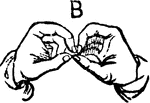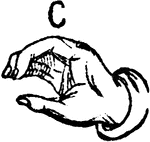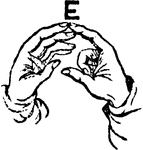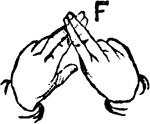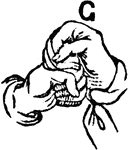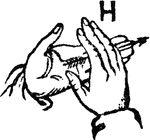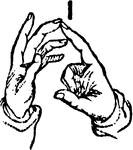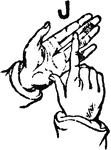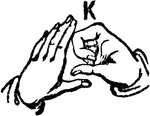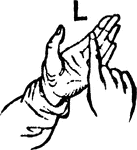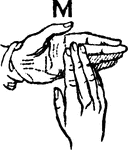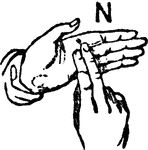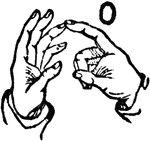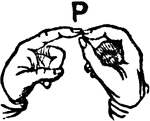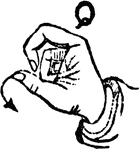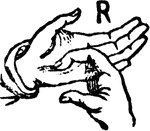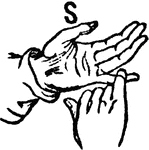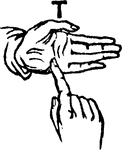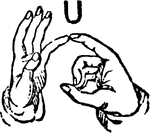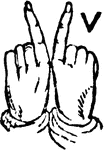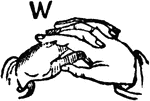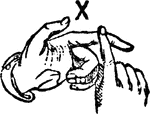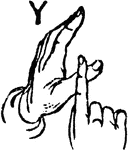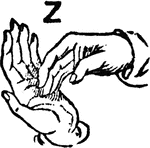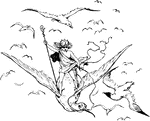
Ball-bearing Hub
"A ball-bearing hub with outward cups. The hub-shell H is turned out of mild steel, and the cups C are…
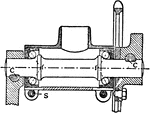
Crank-axle Bearing
"The usual form of crank-axle bearing which has inward-cups and is cup-adjusting. The end of the bracket…

Cephalotus
"Cephalotus follicularis, showing ordinary leaves and pitchers, the right hand one cut open to show…

Hand Roller
"Finally, the leather is rolled and compressed on a level zinc-lined wooden bed by a heavy hand roller,…
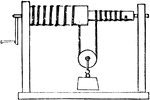
Windlass
"Windlass.—The common windlass for drawing water is another modification of the wheel and axle.…
Wheel Barometer
"The whole length of the tube of the wheel barometer, from C to A, is 34 or 35 inches, and it is filled…
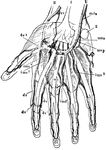
Hand Arteries
"The arteries of the hand, showing the communications or anastomoses of different arteries and the fine…

Slide-Rest Tools
"The middle one an ordinary hook tool, suited for outside work on wrought iron or steel, and the one…

Screwing Machine
"The machine is in fact a lathe with a few special features, such as the hollow mandrel, which enables…

Drilling Machine
"An ordinary vertical drilling machine, one of comparatively small size and single-geared having been…

Praying Mantis
"Probably no other insect has been the subject of so many and widespread legends and superstitions as…

A Frankish Chief in Full Armor
A chief of a Frankish tribe, wearing full battle armor. He stands looking to his right holding a long…
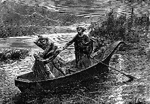
Murder of Prince Arthur
As a kind of joke, John, King Henry's youngest son, had been called Lackland, because he had nothing…
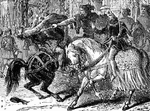
Death of Wat Tyler
Wat Tyler, while talking to the King, grew violent, forgot to whom he was speaking, and laid his hand…

Edward VI. Writing His Journal
Edward VI became King of England and Ireland on January 28, 1547, at just nine years of age. Edward,…

Hand
1. Nerves of the skin 2. Tendons 3. Arteries of the palm of the hand 4. Elbow nerve 5. Elbow artery…
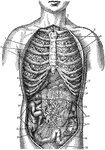
Internal Anatomy
1. Collar bone 2. Left Lung 3. Breast Bone 4. Right Lung 5. Ribs 6. Right lobe of the liver 7. Left…

Offering of Isaac
"And they came to the place which God had told him of. And Abraham built the altar there, and laid the…
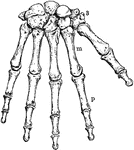
The Human Wrist and Hand Bones
Bones of the Wrist and Hand. Labels: m, metacarpal bones; p, phalanges; 3, bones of wrist.

Hepatic Lobules of the Liver
Diagram of two hepatic lobules of the liver. "The left hand lobule is represented with the intralobular…
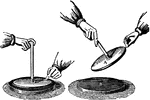
Electrophorus
"The electrophorus and meethod of using. Charge B; place A in contact with B, and touch A (left illustration).…

Leyden Jar
"The Leyden jar and discharger. Its discovery is attributed to the attempt of Musschenbrock and his…
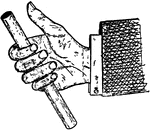
Right Hang Rule
"Right hand rule to determine the direction of magnetic field around a conductor carrying a current.…

Right Hand Rule
"Right hand palm rule to determine the direction of the magnetic field around a conductor carrying a…

Lines of Force
"Lines of force of a circular loop. If a current flow through the loop in the direction indicated, the…
!["Right hand rule for polarity of a solenoid: If the solenoid be grasped in the right hand, so that the fingers point in the direction in which the current is flowing in the wires, the thumb extended will point in the direction of the north pole [of the solenoid]." Hawkins, 1917](https://etc.usf.edu/clipart/35600/35671/rhrsole_35671_mth.gif)
Right Hand Rule, Solenoid
"Right hand rule for polarity of a solenoid: If the solenoid be grasped in the right hand, so that the…
!["Fleming's rule for direction of induced current. Extend the thumb, forefinger and middle finger of the right hand [as shown]. Place the hand [so that] the thumb will point in the direction in which the conductor moves, the forefinger in the direction of the lines of force (N to S), then will the middle finger point in the direction in which the induced current flows." -Hawkins, 1917](https://etc.usf.edu/clipart/35600/35677/induc_35677_mth.gif)
Right Hand Rule of Induced Current
"Fleming's rule for direction of induced current. Extend the thumb, forefinger and middle finger of…

Right Hand Rule
"A rule for direction of induced current which in some cases, is more conveniently applied than Fleming's…
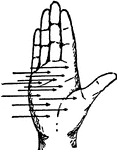
Right Hand Rule, Palm
"The palm rule for direction of induced current: If the palm of the right hand be held against the direction…
